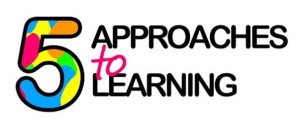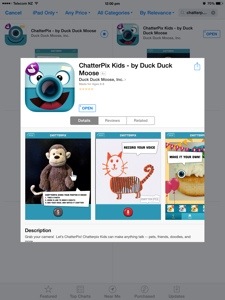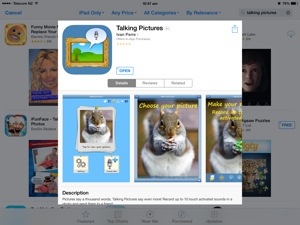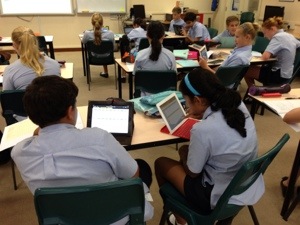
Taking stock
This has been a busy year. We have nearly completed the third year of our 4-year tablet rollout so that, currently, students in Years 7 to 10 all bring their own iPads. This gradual rollout has had two main benefits: Firstly, and this was the main intention, teachers have not been overwhelmed by a feeling of having to suddenly integrate technology with every class, instead they have had time to think about, try out and share opportunities for curriculum and learning experiences for certain groups. Secondly, teachers who were somewhat or very resistant to any devices in student hands are now in the position where they are eager for the remaining year groups to have the same opportunities for creativity, independence etc.
Professionally, I attended a demanding 5 day Apple Learning Academy and qualified as an Apple Foundations Trainer. I have been enjoying delivering certified training this year to over 130 colleagues on Apple iWork and iLife apps. Next I plan to become a Google Educator in October.
Current model of technology for learning
Our model for supporting teachers in the effective adoption of technology has been been evolving over the last few years and is about to change again quite radically. From the inception of The Technology for Learning Faculty four years ago, the model has essentially been to have a team of subject-specific ‘champions’ (each with a couple of hours release time and meeting fortnightly with me) across the English, Maths/ICT, Humanities, Science, Arts, Languages, PE and Learning Support Faculties. The aim was to explore tools and approaches with our own classes, then cascade effective uses back to our teams during planning meetings. This worked really well to the extent that there was low pressure, lots of goodwill, wide coverage of exploration and many examples to share. It also meant that I had a close view on what was being tried across the whole school and could connect subjects together who were trying similar approaches. One drawback was that the champions did not necessarily have much ‘clout’ in their own teams to embed processes that appeared to be effective. More importantly, many curriculum teams’ meetings were so infrequent or admin-heavy that discussions of pedagogy and technology were simply not a priority. Where teams met as often as every week this was far less of an issue and therefore opportunities for iPad use were frequently discussed and put into Schemes of Work on the fly. The result in some other departments was that pockets of teachers were beginning to use certain tools but others were quite happy to not attempt to do so, opening up quite a contrast between the learning experiences of students in different classes and also leading to tensions and insecurities around internal monitoring ie ‘well there’s not much in their exercise books’ when actually great feedback was being given using Showbie, for example.
Happy coincidences
Let me make a slight diversion now to talk about chronologically parallel developments in our school, as they have profoundly impacted the way technology will be viewed and supported in the future.
Firstly, 5 years ago we introduced the IB as an option alongside A levels in the Sixth Form. There is no question that the IB learner profile attributes of ‘resilient inquirer’ and ‘risk-taker’ conflicted with a feeling that much of our historical success in content delivery and exam success was perhaps more down to skilled ‘spoon-feeding’. How would/could these two approaches co-exist?
Secondly, three years ago our then Head of Teaching and Learning introduced an important change to our internal lesson observation process. The overall grade was removed so that these became a two-way conversation about learning rather than a one-way ‘judgement’. Then more recently, teachers have been put into random trios across Faculties and responsibility bands to peer-observe, meaning that this is also no longer a top-down ‘senior or middle-manager observes subordinate teacher’ process. The net result is that teachers have had the licence to be risk-takers in their own pedagogy.
Thirdly, an ongoing programme of Teaching Tips delivered at staff briefings has reinforced the message that it is not ‘showing off’ to talk about what you are doing in the classroom. (Remember, this is a school of mostly British teachers!). This has led to an increasing number of teachers and departments embarking on Twitter, Google+ and YouTube to replicate their idea-sharing to a wider world.
Lastly, we as a Senior School adopted the IB’s 5 Approaches to Learning for use across all grades and coming right up to date, we have just been discussing what opportunities and challenges the abandonment of National Curriculum Levels in the UK might afford us for further innovation in teaching, learning, assessing and reporting.
We did speak to teachers a couple of years ago about using the SAMR model as a way to move from ‘trying out’ new technologies to planning and anticipating their effectiveness ahead of time, but I don’t think we were particularly successful in this as was just before the whole explosion of pedagogy-centred conversations started taking place, and technology was still being seen as ‘bolt-on’ and/or optional in some quarters.
Moving from Exploration to Integration
So, lots of elements in the school have been percolating to inspire and effect pedagogical change. All of this came to a head in November, when we had a half-day release as the Technology for Learning Faculty to consider how to move use of technology ‘From Exploration to Integration’. Two simple ideas emerged crystal-clear from the day’s activities and discussions. Firstly, if the goal was for technology to enhance and transform the learning experiences of EVERY student, then EVERY teacher had to be a champion, not just the technology reps. Secondly, that if technology was to be seen as a pedagogical tool like any other, it had to be managed and approached as a subset of teaching and learning. Ultimately, the person ‘accountable’ for teaching and learning in each subject is the head of that subject. After further discussions with Senior Leadership, these two fundamentals were agreed. Starting in the new academic year, myself and my assistant Head of Faculty will will meet with Heads of Subjects to discuss learning goals for that subject and plan appropriate support/professional development. A good model for this, and one that contributed hugely to the definition of this new structure, was that the Assistant Heads of History and English both volunteered to be the tech reps in their depts this year. This meant that one or two clear goals were chosen from their departments’ own action plan for the year, we then planned professional development and curriculum integration with the HOD, and all members of the department moved on with this together. Logically, given the focus of my role on professional development, I will be line-managed by the Assistant Head responsible for Teaching and Learning.
 SAMR and Approaches to Learning
SAMR and Approaches to Learning
Now that we are on the verge of a new era where reference to technology will ideally becomes less and less explicit, I have made a start, in collaboration with colleagues, on creating a document that will enable teachers to START from a point of view of considering a particular Approach to Learning they want to focus on, let’s say Thinking Skills, and then be able to refer to real examples of the kinds of learning experience (and apps) that might support this. The columns will be populated over time with Enhancement and Transformation examples. The current blank areas do not indicate an absence of ideas or links, just time! My way of interpreting where the crossover lies between these two strands, even if not totally perfect, is to think of Enhancement as ‘almost certainly worth doing if there is some efficiency or productivity gain, likely to be teacher-led, most likely to be an experience that is at individual student level/maybe student plus teacher, helping one’s own learning’. Transformation level experiences I tend to see more as ‘ likely to be student-led, initiated or developed, most likely in collaboration with others, involving creation and publication of authentic, original work, helping one’s own and others’ learning’.
We chose not to have a separate column for each of the 4 levels of SAMR, partly for ease of reading and partly because we feel you can get too hung up on which column a particular learning experience might fit into rather than seeing the big picture.
Here is the document in it’s current state..we would love to get any feedback on it and/or on any of my musings above!
Thanks for reading!














